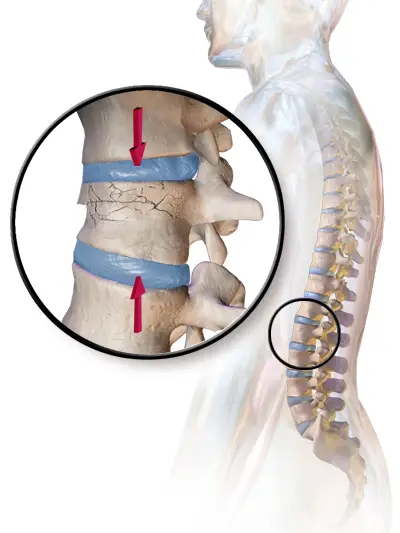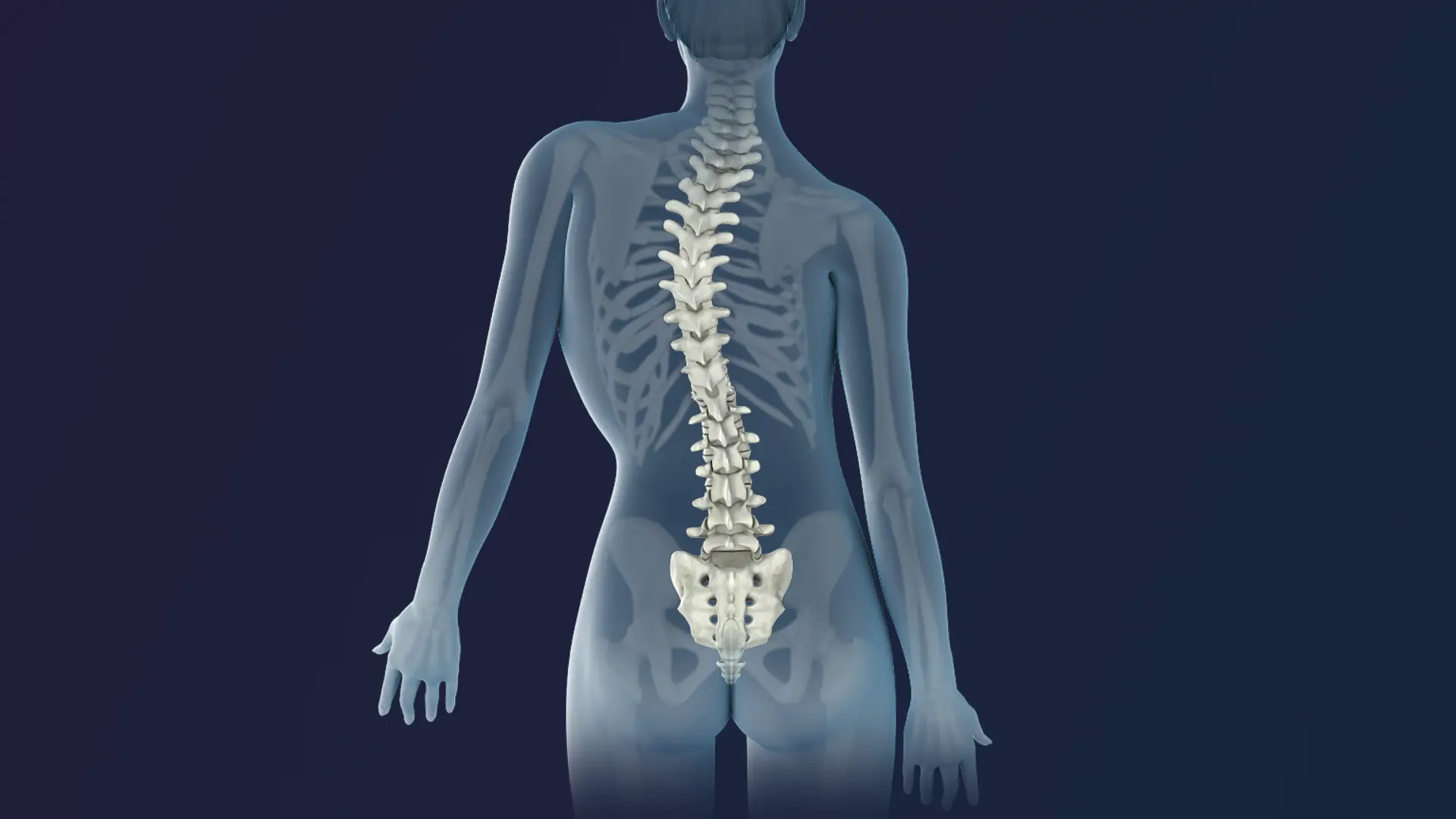Chiropractic care is a safe and effective form of treatment for many musculoskeletal issues. While there are potential risks associated with any medical procedure, it is generally accepted that these risks are very low.
However, in rare cases, a chiropractor can cause a compression fracture. This usually occurs when an overly aggressive manipulation of the spine causes a vertebra to break due to excessive force. In most cases, this type of fracture is minor and will heal on its own, but in some cases surgery may be needed to repair the damage.
It is important to note that when performed correctly by an experienced chiropractor, the risk of serious injury is extremely low.
What Are Spinal Compression Fractures?
A spinal compression fracture occurs when one or more of the vertebrae in the spine experience a fracture, often due to weakened bones. These fractures, also referred to as vertebral compression fractures, are typically caused by degeneration of the bone tissue due to natural aging, or they can be a result of osteoporosis. In many cases, these fractures occur in the middle and lower portions of the spinal column and are caused by downward pressure being placed on the vertebral body.
This can cause the bone to bend and become fractured under the pressure. Spinal compression fractures can be very painful and can cause complications if left untreated. Fortunately, there are treatment options such as pain management and bracing that may help reduce symptoms associated with this type of fracture.
What Causes A Compression Fracture?
A compression fracture is a fracture in the spine or vertebra caused by too much pressure on the bone. It can be caused by an accident, such as a fall, or by a medical condition such as osteoporosis, which makes the bones weak and more prone to fractures.
Osteoporosis is a condition where the bones are weakened due to a decrease in calcium and other minerals in them. As people age, their bones can become weaker and more prone to fractures which can lead to compression fractures. In most cases, these fractures cause no symptoms and heal on their own over time.
However, if the fracture is severe enough it can cause pain, difficulty standing up straight, or even chronic back pain.
Who Is At Risk For A Compression Fracture?
A compression fracture is a fracture of the spine that occurs when the vertebrae become compressed, resulting in a collapse of the vertebra. The most common cause of this type of fracture is osteoporosis, which weakens bones and makes them more prone to fractures.
Other causes can include trauma or tumors that put pressure on the vertebrae. Those at risk for compression fractures are mostly older individuals with weakened bone density due to age or other medical conditions such as osteoporosis.
Additionally, those who participate in impact sports such as gymnastics and football are more likely to experience such fractures due to increased stress on their spines.
Treatment for compression fractures may include rest, bracing, pain relief medications, or surgery depending on how severe the fracture is. In some cases, physical therapy may be recommended for strengthening muscles around the affected area and improving posture.
What Are The Symptoms Of A Compression Fracture?
A compression fracture is a type of fracture that affects the vertebrae in the spine. It occurs when there is too much pressure on the bone, causing it to collapse under the weight. Symptoms include back pain, a hunched posture and an inability to bend.
The pain may worsen with time, depending on the severity of the fracture. An x-ray can be used to detect a compression fracture, which will show a decrease in height of one or more vertebrae in the spine.
Sometimes this type of back injury can cause kyphosis, which is an excessive curvature of the upper back. Compression fractures can often be treated with rest and medication; however, severe fractures may require surgery.

How Is A Compression Fracture Diagnosed?
A compression fracture is a fracture of the spine and is typically caused by weakened bones due to osteoporosis. Diagnosis of a compression fracture usually begins with a physical examination, followed by an x-ray to evaluate the density of the bones.
During the x-ray, the doctor may look for signs such as an abnormal curve in the spine or any deformities that could indicate a fracture. The doctor may also order additional tests, such as an MRI or CT scan, to get more detailed images of the area and detect any fractures or other abnormalities.
If a fracture is present, then further investigation will be necessary to determine if it is a compression fracture and what type of treatment is needed.
How Is A Compression Fracture Treated?
A compression fracture is a fracture of one or more vertebrae in the spine. It is most commonly caused by osteoporosis, which weakens the bones and makes them more susceptible to breaking.
Treatment for a compression fracture depends on the severity of the fracture and the patient’s overall health. X-rays are often used to diagnose a compression fracture, and calcium supplements can be prescribed to help strengthen bones affected by osteoporosis.
Pain relief medications such as acetaminophen or ibuprofen may also be recommended, as well as physical therapy or bracing to help support the back and reduce pain.
In some cases, surgery may be needed if there is significant damage to the vertebrae or surrounding tissue. Regardless of treatment, it is important for those with a compression fracture to maintain an active lifestyle that includes regular exercise, nutritious meals, and adequate amounts of rest.
What Are Possible Complications Of A Compression Fracture?
A compression fracture is a type of fracture of the vertebra that can lead to several complications. The most common complication of a compression fracture is an exaggerated forward curvature of the spine, known as kyphosis.
This can result in pain and discomfort, especially when standing or walking. In more severe cases, the fracture may cause nerve damage leading to intense and disabling pain that radiates through your back and legs. If left untreated, a compression fracture can worsen over time and may even lead to spinal deformity or disability.
Depending on the severity of the fracture, surgical intervention may be needed to restore stability to the spinal column and alleviate symptoms such as severe pain. In any case, it is important to seek medical attention if you suspect you have a compression fracture in order to avoid potentially serious long-term consequences.
What Can I Do To Prevent A Compression Fracture?
Osteoporosis is a condition that causes bones to become weak and brittle, which can lead to compression fractures. To prevent this type of fracture it’s important to treat and manage osteoporosis. This includes eating a balanced diet that is high in calcium and vitamin D, exercising regularly, avoiding smoking, and limiting alcohol intake.
Additionally, medications can be prescribed to help slow down bone loss and increase bone density. Regular screenings should also be done to monitor changes in bone health over time. In some cases, lifestyle changes alone may not be enough to prevent a fracture so it’s important to speak with a healthcare professional about the best way to treat osteoporosis for each individual patient. Taking these steps will help reduce the risk of developing a compression fracture due to osteoporosis.
Types of Compression Fractures
A compression fracture is a type of fracture that occurs when a vertebral body, or part of the vertebra, collapses due to pressure from the spine. It is typically caused by trauma or osteoporosis, resulting in a decrease in bone density that leads to a weakening and eventual breakdown of the bone.
Compression fractures can cause pain and difficulty with movement, as well as impairing an individual’s posture. Treatment for compression fractures often includes medication, physical therapy, braces or other support devices, and in more serious cases, surgery may be necessary to correct the problem. In general, treatment depends on the severity of the fracture and any underlying conditions that could be causing it.
Regardless of treatment plan chosen, rest and avoiding activities that put strain on the spine are usually recommended during recovery.
Key Points About A Compression Fracture
A compression fracture is a fracture of the vertebra in the spine caused by a collapse of the bone due to trauma or osteoporosis. This type of fracture can cause severe pain and disability, so it is important to understand its causes and treatments.
Osteoporosis, which weakens bones and makes them more prone to fractures, is one of the most common causes of compression fractures. These fractures can be treated with braces, medications, physical therapy or even surgery depending on their severity.
Surgery may be necessary if there is nerve damage or spinal instability caused by the fracture. It’s important to keep in mind that early diagnosis and treatment are key for a successful recovery from a compression fracture.
Living With A Compression Fracture
Living with a compression fracture can be difficult and painful. A compression fracture is a type of fracture caused by the collapse of a vertebrae due to weakened bones, often caused by osteoporosis.
Treating a compression fracture involves wearing a back brace or using crutches for support, along with physical therapy and medications to alleviate pain and promote healing. In some cases, surgery may be required to repair the fractures.
Living with a compression fracture can cause discomfort and limit mobility at times, but it is possible to continue living an active lifestyle if proper precautions are taken to protect the fractured area. With proper treatment and care, it is possible to recover from a compression fracture in time and resume regular activities.




